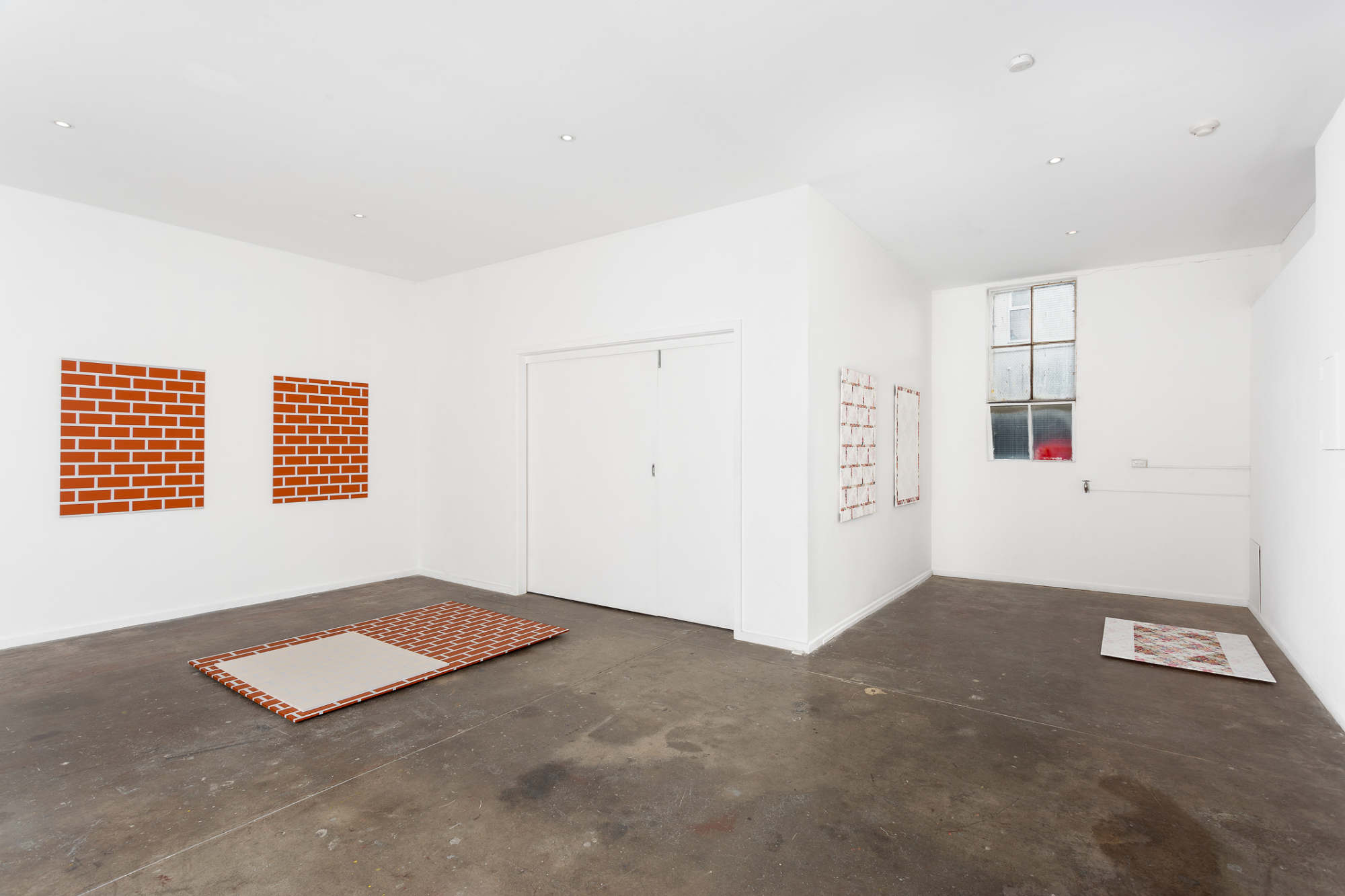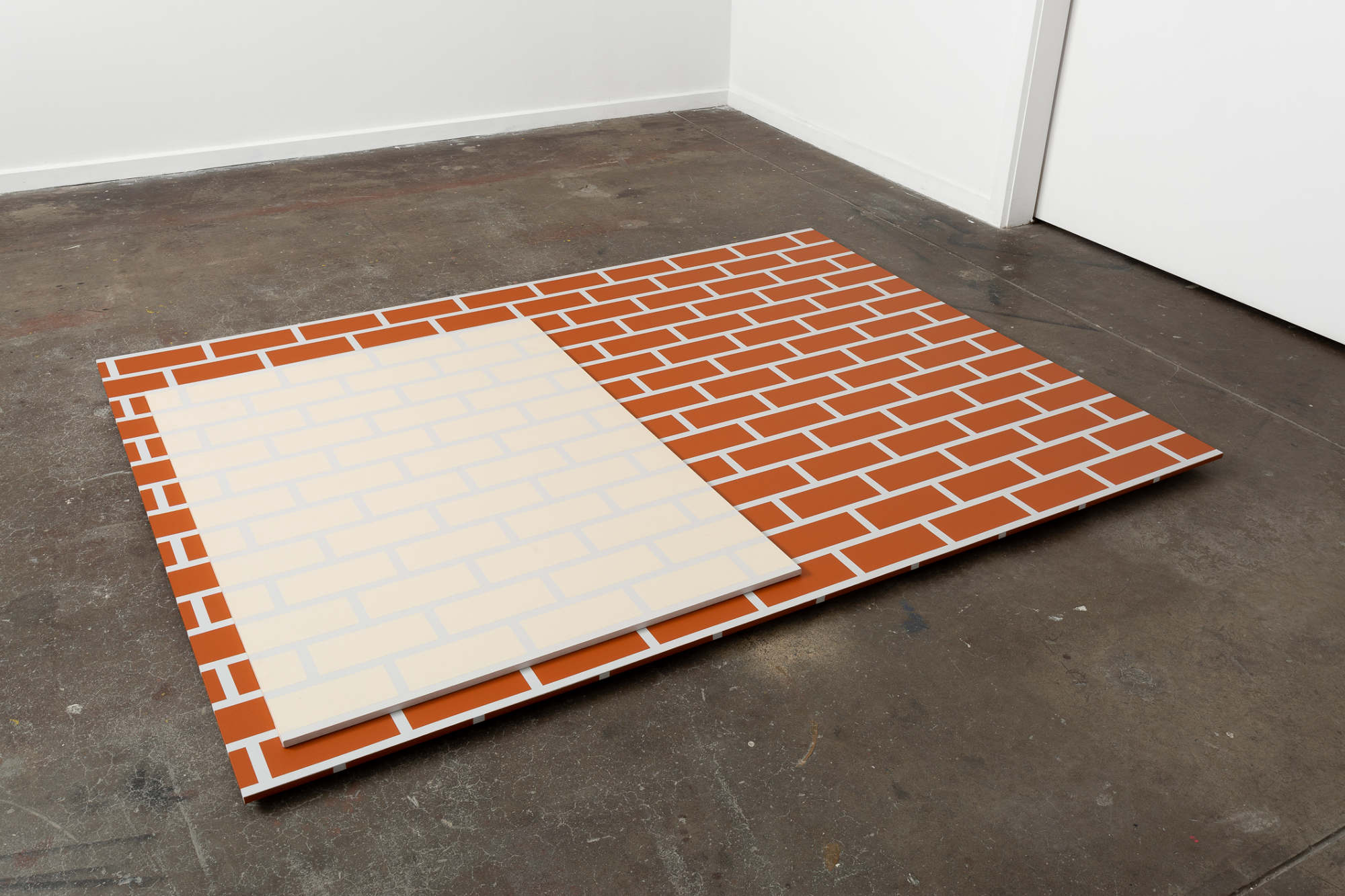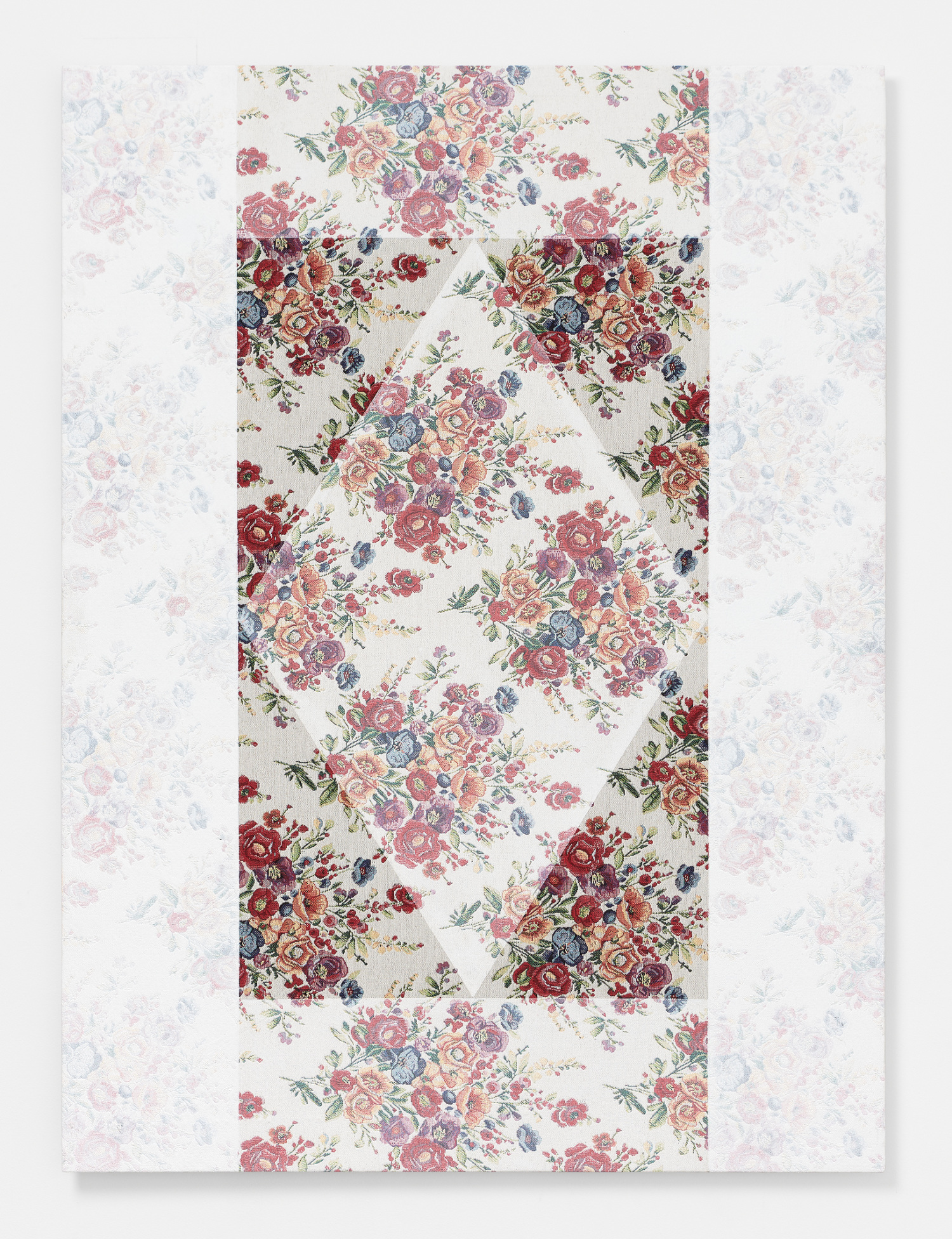In August–September, 2018, Darcey Bella Arnold exhibited My Mother’s Labour at Sutton Projects, Melbourne. Presenting a suite of paintings, these works explored labour, particularly the parallel between artistic production and the creation and upkeep of the home.
Employing both utilitarian and decorative materials such as house paint and upholstery fabric, Arnold painted the textured facades of the familiar brick veneer home, a staple of Australian residential architecture.
These flat, hard-edge paintings were layered with references to interior domestic settings and playful, scaled-up depictions of hand-written notes, alluding to household social dynamics. By fusing the internal with the external, the public with the private, Arnold pointed to narratives that are at once personal and political.
Alongside these paintings sat two figurative works of women making art, sketched by Arnold’s mother and then reinterpreted by the artist. In doing so, the physical and emotional labour of both mother and daughter is used to position the house as a vessel for speaking about art making, feminism and storytelling.
The exhibition essay, There’s nothing wrong with drinking tea: Disability, memory and language, was written by Darcey Bella Arnold, and edited by Jennifer Anne Arnold. Read the essay here
An exhibition review, written by Abbra Kotlarczyk, was published by Un Extended (September, 2018). Read the review here
Darcey’s inaugural exhibition with ReadingRoom, me say edit be, is upcoming.
Contact the gallery here to receive a catalogue of available works, and to register interest.
Darcey Bella Arnold’s practice considers the artists’ close and unique relationship with her mother, Jennifer. Jennifer has an acquired brain injury, which has altered her use of language. As one of her carers, Arnold’s work is a meditation on language, image making and familial relationships.
Using gleaned material, she has explored her mother’s unique use of language and combined it with the artists’ language of image making. Through the use of diacritic marks and the misuse of the English language the narrative is left open for interpretation, intentionally, and language becomes a configuration in the creation of a compositional image.
















